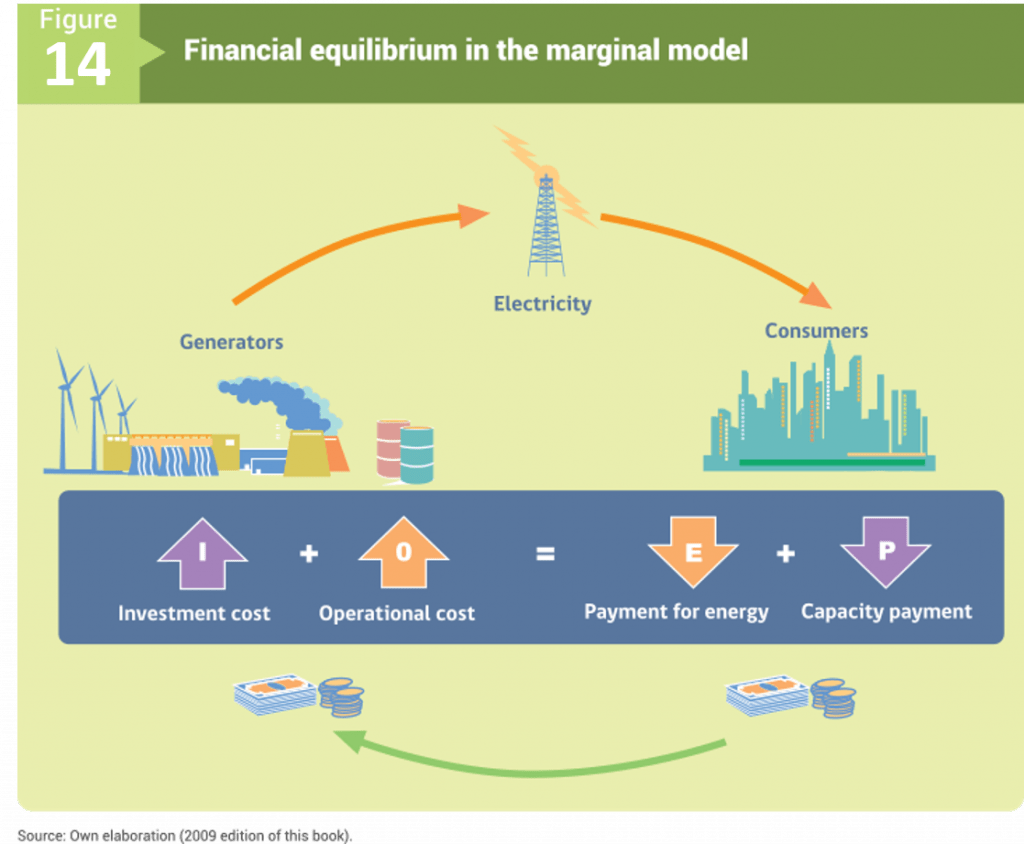3.1 Economic fundamentals of the electricity market
The electricity market in Chile has been designed in such a way that investment and operation of the energy infrastructure is carried out by private operators, promoting economic efficiency through competitive markets in all the non-monopolistic segments. Thus, generation, transmission and distribution activities have been separated in the electricity market, each having a different regulatory environment. Distribution and part of the transmission segments are both regulated, and have service obligations and prices fixed in accordance with efficient cost standards. In the generation segment a competitive system has been established based on marginal cost pricing Peak Load Pricing. Whereby consumers pay a price for energy and a price for power associated with peak demand hours.

In theory, the Peak Load Pricing system ensures that, whenever the structure of the pool of generators is adequate to meet demand, revenues from electricity sales at the marginal cost of electricity (E)5 , plus revenues from the sale of capacity at the cost of developing peak power (P), exactly cover investment costs (I), plus operational costs (O) of producers, considered as a whole.
The operation of the Chilean market is characterized by the existence of a spot market in which the price of electric energy corresponds to the short-term marginal cost resulting from the instantaneous balance between supply and demand. In Chile, the National Electric System is operated by the Coordinator.










